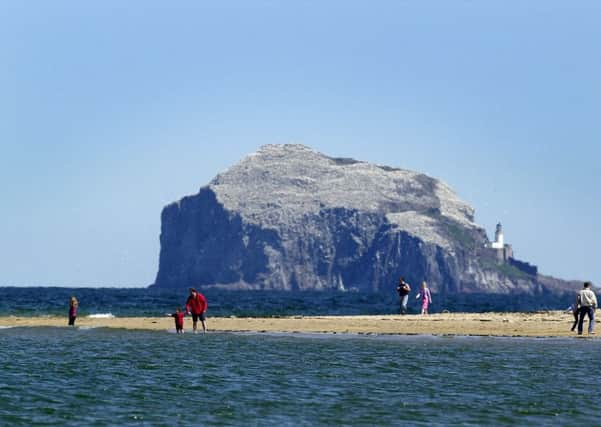Plastic on Scotland’s bathing beaches teeming with E.coli


Scientists have warned billions of the so-called “nurdles” were eluding bathing water quality tests and putting human health at risk.
The beads, used as feedstock for the plastics industry, are unintentionally released into rivers and oceans every year through effluent pipes, blown from land or by spillage.
Advertisement
Hide AdAdvertisement
Hide AdEnvironmental scientists have long feared they could allow dangerous microbes to “hitchhike” on their abraded surfaces, transporting bugs from sewage outfalls and agricultural discharges to bathing waters and shellfish beds.
Now in a new study, biologists at the University of Stirling collected nurdles from five EU-designated bathing beaches in East Lothian – Longniddry, Gullane, Yellowcraigs, Broad Sands, and Milsey Bay, North Berwick – which are downstream in the Forth Estuary from Edinburgh and the Grangemouth industrial zone. They found 45 per cent were polluted with E.coli, which can result in abdominal cramps and diarrhea, and up to 95 per cent with the bacteria Vibrio spp, which causes gastroenteritis.
Nurdles collected from Gullane and Yellowcraigs were found to be especially highly polluted by E.coli. Those from Longniddry were especially heavily contaminated by Vibrio.spp.
Dangerous in itself, E.coli is also a so-called faecal indicator organism, or FIO, flagging up the presence of sewage pollution. Scientists said the beads, which are only 1mm to 5mm big and can be coloured or translucent, have become ubiquitous on many of the world’s beaches.
The nurdles have been given the nickname “mermaids’ tears”.
At each of the East Lothian beaches, the highest densities of nurdles were found either behind rocks or among organic debris and seaweed.
Dr Richard Quilliam, senior lecturer in environmental biology at Stirling and one of the authors of the UK Natural Environment Research Council-funded study, said: “These are lovely tourist beaches. They are carefully cleaned, but these nurdles are being constantly replenished.
“They can act as a vehicle for moving pollution around the coastal environment and increase the exposure.
Advertisement
Hide AdAdvertisement
Hide Ad“I don’t want to start mass hysteria here, but it is a risk to human health if someone is lying sunbathing on the beach next to these polluted nurdles or children are playing on the beach, making sand castles, or, heaven forbid, putting them in their mouths
“People should avoid them. If you’re having a picnic on the beach, wash your hands and don’t let children play with nurdles.
“There are also implications for beach clean-up volunteers, who should always wear gloves.”
All field work was performed in June and July when tourist numbers were generally at their highest.
The paper, published in the Marine Pollution Bulletin, calls for improvements to be made to EU Bathing Water Profiles by detailing beach stranded plastics as a possible source of FIOs and potential pathogens, which are harmful to human health. .